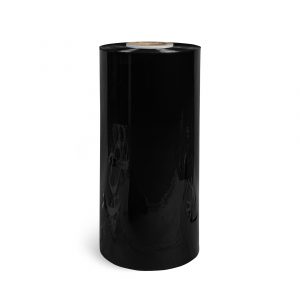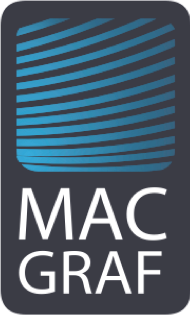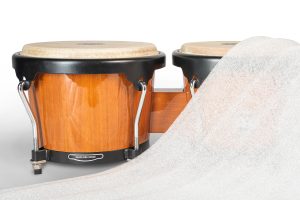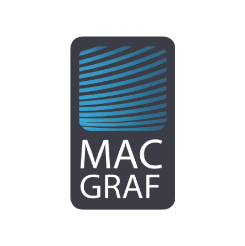Stretch Film - A Guide to Available Types and Their Applications
Regardless of the type of business you run, stretch film is a packaging material that is indispensable in many industries, such as logistics, e-commerce, and manufacturing, where securing goods during transport and storage is of utmost importance. The choice of materials you use plays a significant role in determining the amount of material used, costs, packaging speed, and more.
Stretch film stands unrivalled—its popularity stems from numerous advantages. It is flexible, durable, and capable of protecting goods from external factors while stabilising loads stacked on pallets.
In this article, we will take a closer look at the different types of stretch film, its benefits, methods of use, and modern innovations such as coreless stretch film, which contribute to the optimisation of the packaging process.
Stretch film - what is it made of?

Types of stretch film
Depending on the specific business needs, stretch film is available in various types. Traditionally, it is divided into hand stretch film, machine stretch film, and pre-stretch film.
Hand stretch film is an ideal choice for companies operating on a smaller scale or lacking automated packing equipment. On the other hand, machine stretch film, used in wrapping machines, is widely employed in large manufacturing plants and logistics centres where fast and efficient packaging is essential. The pre-stretch film, which is pre-stretched to facilitate its application and significantly reduce material consumption, is also becoming increasingly popular.
For clarity, we distinguish:
- Hand stretch film – designed for manual wrapping of goods (optionally with the use of a stretch film dispenser), where automated packaging processes are not in place.
- Machine stretch film – used in automatic pallet wrapping machines, enhancing the speed and efficiency of the packaging process.
- Coloured stretch film – available in various colours (black, white, blue), allowing for product identification, increased privacy of shipments, and protection against UV radiation.
- Pre-stretch film – a material pre-stretched during the production process.
- Coreless stretch film – eliminating the use of an inner cardboard core, making it a more eco-friendly solution (no need to dispose of the cores).
Coreless stretch film – a step towards sustainability

Particular attention should be given to coreless stretch film, which we offer in both machine and hand variants. Unlike traditional options, this type does not feature an inner core made of cardboard. An additional advantage of choosing coreless film is that its entire weight consists of usable packaging material. What does this mean? Businesses pay only for the film they actually use in packaging, rather than for an additional component that ultimately ends up in the bin.
It must be acknowledged that this modern solution eliminates the need for core disposal, resulting in a tidier warehouse, reduced waste management costs, and more efficient use of storage space. The absence of cores is a significant convenience, as it eliminates the need to allocate space for their storage and assign someone to handle their disposal—an issue that often results in scattered cores across the warehouse. This is not only a financial saving but also a step towards reducing the negative environmental impact. Additionally, lighter rolls are easier to handle, reducing strain on workers.
Let’s assume your company orders a standard pallet of stretch film containing 240 rolls of hand film. Each roll weighs 3 kg, of which the core (tube) weighs an average of 0.5 kg.
- The total number of cores on the pallet: 240 pieces.
- The total weight of the cores: 240 pieces x 0.5 kg = 120 kg (which means an additional 120 kg of load on the pallet).
- Space occupied by the cores: with an average core height of 50 cm and an external diameter of 7.5 cm, one core occupies approximately 0.0022 m³. For the entire pallet: 240 pieces x 0.0022 m³ = 0.528 m³.
That’s over half a cubic metre of unused cardboard taking up space in your warehouse.
If your company needs to dispose of these cores, the cost of disposal averages 0.50 PLN per kilogram (assuming standard rates for cardboard waste, which may vary depending on the volume of material and the region).
- The disposal cost for cores from one pallet: 120 kg x 0.50 PLN = 60 PLN.
If you were to order a pallet of coreless stretch film, you would eliminate these 120 kg of waste and half a cubic metre of occupied warehouse space. Additionally, you avoid the disposal costs of the cores, which translates into significant savings over the course of a year.
This solution not only simplifies logistical processes but also enhances your company’s eco-friendly profile by eliminating unnecessary waste.
Advantages of stretch film
Using stretch film offers numerous benefits appreciated by entrepreneurs across various industries. Primarily, it ensures the stability of goods on pallets, which is crucial during transportation. This packaging material protects products from shifting and damage while shielding them from external factors such as moisture and dust. Additionally, stretch film allows for efficient use of space—both on warehouse shelves and in transport vehicles, particularly when stacking packages or pallets.
The economic aspect cannot be overlooked either. Thanks to its high efficiency and the ability to use thin yet durable layers, stretch film helps reduce packaging material costs. Companies that have implemented pre-stretch film or switched from hand film to machine film have noted a significant reduction in material usage, which, when calculated, translates into tangible savings.

Stretch film:
- It is flexible – its stretchability allows it to adapt to the shape of the packaged goods, ensuring stability.
- Protects against external factors – such as dust, moisture, and mechanical damage.
- It is economical – a relatively inexpensive material that helps reduce packaging costs.
- It is eco-friendly – 100% recyclable.
- It is transparent (allows easy identification of the contents) or coloured (conceals the contents).
Ways to use stretch film
Stretch film is incredibly easy to use. For hand film, simply wrap it around the goods, ensuring proper tension to secure the load’s stability. Machine stretch film, on the other hand, requires appropriate equipment (wrapping machines) that automate the wrapping process, enhancing efficiency and reducing packaging time.
How to choose the right stretch film?
When purchasing stretch film, it’s important to consider several factors: the type of load, the method of application, and transport conditions. Heavier goods require thicker, more durable film, while lighter shipments can be secured with thinner material. Thicker film is less elastic but more resistant to punctures, whereas thinner film offers greater flexibility. Companies with automated equipment should opt for machine stretch film, whereas smaller businesses might find hand stretch film more suitable.
It’s also worth paying attention to the weight of the roll. As mentioned earlier, stretch film is typically sold by weight, and in traditional films with a core, the weight includes the core. In this case, it’s crucial to verify whether the given weight refers to net or gross weight.
Stretch film elasticity

Elasticity, also known as stretch or elongation, is a characteristic of stretch film that defines its ability to increase in length under tension. This is a crucial parameter that directly affects the efficiency of load securing.
Standard stretch films have an elasticity range of 100% to 150%, meaning they can extend up to 1.5 times their original length.
High-stretch films can achieve elongation rates of up to 300% or more, making them suitable for securing heavier or irregularly shaped loads. These films are more effective in stabilising goods but may require specialised wrapping machines capable of precisely controlling the tension force. Therefore, it is essential to match the type of film to specific logistical needs to ensure optimal protection and load stability during transport and storage.
Examples of stretch film applications:
- Logistics and Warehousing – ensures the stability of goods on pallets during transport and storage.
- Industrial Production – protects products from damage, dust, and moisture during manufacturing processes.
- E-commerce – enables secure packaging of courier shipments.
- Agriculture and Horticulture – used for wrapping hay bales or protecting gardening tools.
- Food Sector – protects products from losing freshness and contamination.
Summary
Stretch film is a material that is difficult to replace. Its versatility, durability, and ease of use make it an indispensable element of the packaging process in almost every industry. By choosing the right type of film, businesses can benefit from cost savings, improved logistics, and environmental protection.
Mac-Graf, as an expert in packaging solutions, offers products tailored to individual customer needs, ensuring top quality and an innovative approach.
- Order today and discover how stretch film can streamline your packaging processes!
We can help you and optimize the packaging process in your company
Make an appointment with our advisor









